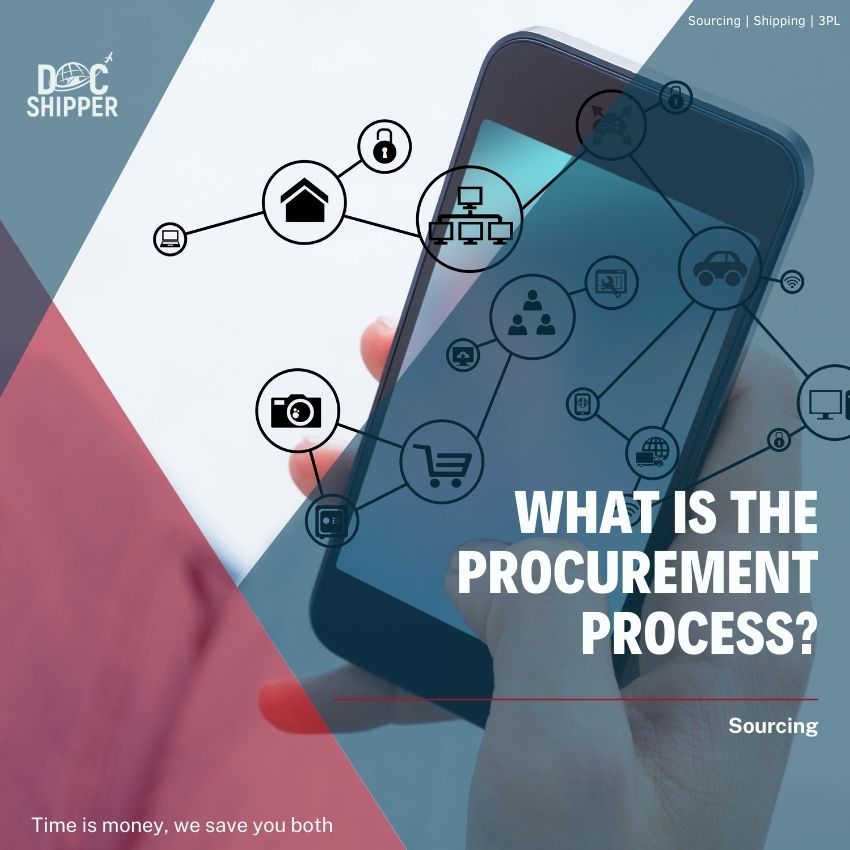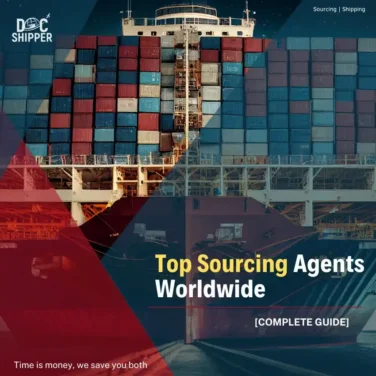Procurement refers to the logistics enterprises, in order to achieve the sales goals of enterprises, obtain marketable goods in a full understanding of the market requirements, which according to the business capacity of enterprises, the use of appropriate procurement strategies and methods, through the exchange of equivalence, the process of economic activity.
It includes two aspects, on the one hand, procurement personnel must be proactive in responding to the user needs, on the other hand, enterprises should maintain a mutually beneficial relationship with suppliers. If you want to find out the whole process of procurement, follow us to be familiar with everything!
Principles of procurement
It’s acknowledged that the purchasing of marketable goods is equal to selling half of them already. As a consequence, if the retailer wants to purchase marketable, quality goods, the procurement process should follow certain principles.
Demand-determined
Demand-determined is to determine the purchase of goods based on the demand for goods in the target market. For retail enterprises, the relationship between buying and selling is never to buy good first and sell. The intelligent retailers would instead, find out what the market demand for goods, what goods are easy to sell, before purchasing any goods. Therefore, the first principle is, the purchase entirely decided by the sales situation.
The demand-determined principle can easily explain the relationship between purchase and sales and can promote the production of manufacturers on demand, thus avoiding the blindness. However, when adhering to the principle of demand-determined, different procurement strategies should also adapt to various commodities.
DocShipper Tip
DocShipper Advice : You should always keep in mind that DocShipper will always work on optimizing the logistic processes in order to maximize your results, your costs and will also support you throughout the purchasing process: supplier research, negotiation, quality control.
Insisted in SMS: Small Multi Short
This refers to the principle of the small-batch, multi-species, and short cycle that retail enterprises adhere to when purchasing goods, which is determined by the nature and economic benefits of retail enterprises. Since there are certain limitations of the scale of retail enterprises, working capital is limited as well, and the storage conditions of commodities are not very good. In order to expand the varieties of business, retailers should compress the purchase amount of each commodity, and try to increase the number of varieties, in order to purchase frequently and promote fast.
The principle of small-batch, multi-species and short cycle can also make the working capital of the retail enterprises speed up, thus strengthening the utilization rate of funds, so this principle is one of the effective means to improve the economic efficiency of enterprises.
Widen channels of supply

This refers to when it comes to the purchase of goods, retail enterprises should widen purchase channels to expand their business. With the purchase of new goods, new varieties of goods are able to promote and stimulate customer consumption.
This requires retailers to finish market demand survey in advance, on the basis of which can decide to purchase varieties and quantities.
Generally speaking, for those products which are newly developed, and also in the marketing stage of testing, should be purchased only after be proved of customer recognition.
Keep enough stock

This refers to the need for retailers to maintain a certain amount of merchandise in stock to ensure a timely supply of goods and to prevent the normal operation from being affected by goods out of stock.
This requires retailers to investigate the ratio of merchandise operation and inventory at any time and decide the corresponding reasonable inventory amount through sales volume, so as to give full play to the role of inventory warranty.
Civilized business practices
Retail enterprises face customers directly, and obtain profits by selling goods to customers, so they must adhere to the principle of civilized business, honesty, and integrity to customers. This principle is linked to the procurement of goods, that is, to ensure the quality of purchase, to eliminate counterfeit and shoddy goods. The suggestion is to find the qualifications and certificates of your country as much as possible, then make the business with your suppliers.
Find products certificate in the USA.
Find products certificate in Europe.
Channels and procedures of procurement
Channels of procurement
The channels of procurement are the links and routes through which a retailer purchases its goods. Each retailer has its own unique characteristics, so the merchandise sourcing channel may not be exactly the same.
However, in general, the following points should be kept in mind when choosing the channel.
Simplification of the process: Compress the selection process as much as possible to speed up the procurement process. Shortest route principle: In the case of similar commodity prices, choose the nearest products to purchase. Time-saving principle: Reduce transit procedures as much as possible to save time. Economic saving principle: Save procurement cost from all aspects.
There are many types of commodity procurement channels, and here are some of the common ones.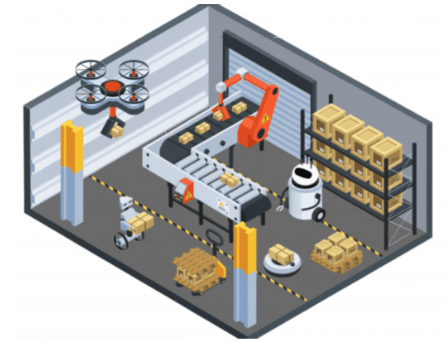
Commercial system wholesalers: for example, commodities such as cigarettes and alcohol are purchased from the tobacco monopoly system and the sugar and alcohol monopoly system. Due to the large number of commodities purchased by retail enterprises, sometimes they have to purchase from several different system organizations.
Production enterprises: direct contact with the manufacturer to purchase goods, can reduce the intermediate process, thus reducing circulation costs, while expanding the source of goods and increase the selectivity of goods.
Wholesale market: a large number of goods are concentrated here, and the advantage is the mass selections and complete varieties; the disadvantage is that the quality is difficult to guarantee.
Distribution center: This is a kind of commodity distribution system that has emerged in China in recent years. Find information about China’s distribution center. The distribution center accepts large quantities of commodities from suppliers and then sorts classify, distributes, and delivers them according to the requirements of the merchants. Therefore, the distribution center is actually a place for logistics activities. Retailers can purchase goods directly from distribution centers; however, it is more economical for large-scale retail chains to set up their own distribution centers.
Procedures of procurement
Procurement is a very complex issue involving many aspects of detail, and inadvertent handling can lead to errors, delays in purchasing, and ultimately affect merchandising.
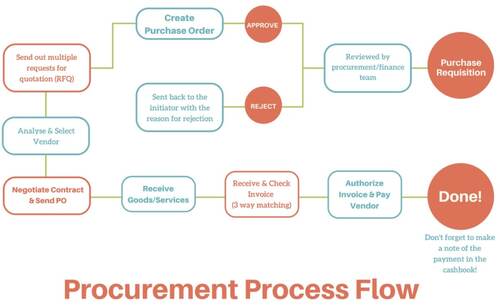
There are the following main steps when it comes to the procedures of procurement. Firstly, prepare a catalog of products to be purchased and specify the requirements for each product. Secondly, select suppliers and negotiate with the supply and sale of goods. Thirdly, find out the market prices and compare them with those of suppliers as the basis for purchasing prices. Then, check samples and make purchases from samples. And here comes to negotiate with suppliers on the supply price of goods thus starting to Issue purchase contracts. Remember to review suppliers’ invoices and documents. Eighthly, collect the receipts and inspection of goods and inventory, and records archiving and making production cards. Lastly, tracking management, according to commodity sales, adjust the location of goods, display area, etc., to promote sales of goods.
DocShipper Alert
DocShipper Alert : You don’t have to worry about your logistical routing and the conformity of your electrical products, you can count on our 3PL (Third Party Logistics) to handle the entire process safely. Do not hesitate to contact our agents!
Methods of procurement
Retail enterprises should apply the related methods of procurement according to the different characteristics of the purchase channels and sources of various commodities, combined with the actual situation of the enterprise.
Commodity procurement methods mainly include the following types.
Centralized and unified purchasing
The retailer’s manager or specialized purchasing department is solely responsible for procurement, and each department should be specialized in filling order forms and selling.
Centralized purchasing has a number of advantages. Firstly, it saves costs by having a small number of staff responsible for whole store purchases. Uniform use of funds makes it also cost savings. Besides, it can prevent the purchase channels from being too scattered and can get the advantage of discounts for bulk purchases. It will help each product department to concentrate on the service of merchandising.
Of course, centralized purchasing has its shortcomings, such as the disconnection between purchasing and sales, unsold goods, an increase of internal transfer procedures, unfavorable internal circulation of goods, etc. Therefore, it is necessary to strengthen the planning of product procurement. Therefore, it is necessary to strengthen the planning of commodity procurement.
The centralized and unified purchase of goods is mainly favorable for small and medium-sized retail enterprises.
Decentralized independent purchasing
In this method, each merchandise department is directly responsible for the purchase of goods, and the retailer controls only the global balance, regulating the allocation and use of funds according to the sales of each department.
The advantages of the decentralized independent purchasing method are the following. Firstly, each merchandise department understands the sales dynamics of its own department and the preferences of consumers, thus saving time by organizing and distributing the right products in a timely manner, which will help to speed up the cash flow and improve the operation. The initiative and enthusiasm of the merchandise department and salesmen can be fully utilized.
Of course, this kind of purchasing method also has defects and deficiencies. Procurement is decentralized, which is not conducive to unified management. And it requires a large amount of use of labor force, transportation, and financial resources, which increases the cost. In addition, it increases the purchase burden of the salesman, not conducive to improving the quality of service.
The decentralized independent purchase method is more suitable for the larger, nearby procurement of retail enterprises.
Combined centralized and decentralized purchasing
It is characterized by the nearest procurement by the commodity part of the bulk purchase, to foreign procurement by the enterprise centralized unified purchase. This integrated approach is conducive to the centralized use of funds for retail enterprises and the organization of procurement personnel. In addition, it can give full play to the enthusiasm of the Department of Commodities. If the strengthening of planning and convergence in the procurement is carried out, you can see the improvement in which the role of the above-mentioned two purchase methods is difficult to play.
This method is generally suitable for large retail enterprises.
Entrusted purchasing
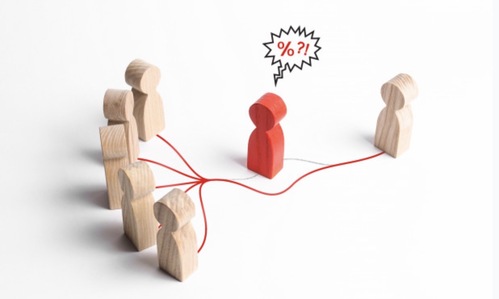
For SMEs, because of the relatively small size, the purchase of a greater variety of goods but smaller quantities can bring many complex procedures. Since no one is responsible for the purchase, they should entrust the procurement to intermediaries, which requires a certain amount of agency fees. The use of entrusted purchase should strictly check the quality of the products, specifications, varieties, and return the ones do not meet the procurement standards.
This approach is mainly applicable to small and medium-sized retail enterprises.
Strategies of procurement
For a retailer, if the merchandise sourcing strategy is used properly, it will not only procure quality goods but also ensure the stability of the profitability of the business. Therefore, various merchandise sourcing strategies are introduced here.
Sourcing strategies in a buyer’s market
That is, the oversupply of goods in the market, the retailer dominates the situation. At this time, the retailer can rely on the initiative to select goods at will, the main focus on the sale of goods, adhere to the principle of selling into, to demand into, diligent into the fast-marketing procurement, accelerate capital turnover, save procurement costs and improve sales profits.
Purchasing strategy under the seller’s market
That is, a situation in which the supply of goods in the market exceeds the demand, the supply of goods is tight, and the supplier is dominant. At this time, the retailer must focus on the commodity procurement process to ensure the stability and adequacy of the supply of goods. Their strategies are mainly.
(1) Open up a wide range of purchasing channels and contact multiple suppliers.
(2) Cooperate with manufacturers and provide them with capital and equipment.
(3) Provide preferential treatment to manufacturers or suppliers, such as subsidized transportation by stores, door-to-door pick-up, advertising assistance, etc.
Sourcing strategies for different life cycle products
There is a life cycle from the development of a product to its selling and weakening, i.e. the trial period, growth period, maturity period, and decline period. When the commodity is in different life stages, the purchase strategy adopted is also different.
(1) Trial period products can be purchased in small quantities, and then decide to purchase in bulk when the market looks good.
(2) The growth period is the best-selling goods, you should actively expand the number of goods, using advertising and promotion.
(3) The mature goods in the early market are still optimistic, can be organized to purchase large quantities of goods; later gradually weakened, replaced by new products, should be planned to gradually eliminate.
(4) Products in the recessionary period should not be stocked, or should be stocked in small quantities according to market demand, and should be replaced by other products in a planned manner so that customers will gradually accept the substitute products and the recessionary period products will be eliminated.
Three basic elements of procurement negotiations
Procurement is not only a major part of a retail store’s business, but it is also a business art, and merchandise negotiation is particularly important. The best sourcing negotiation often results in the greatest benefit to the customer and a win-win situation for both the retailer and the supplier.
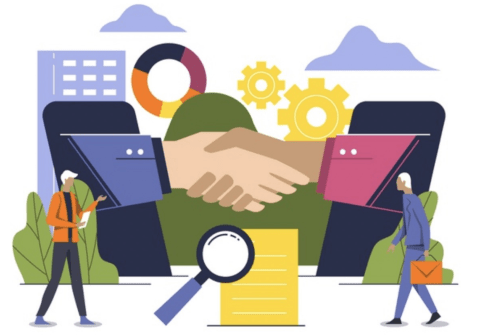
The core of commodity sourcing negotiations is bargaining, that is, the retail buyers and suppliers negotiate directly on the price of goods and trading conditions.
From the perspective of business interests, there is a difference in the mindset of supply and demand: the supplier wants to be able to supply goods at the usual price (the standard on the quotation), while the retailer wants to obtain high-margin goods at a discounted price.
The achievement of the purpose of the procurement of retail stores does require buyers in the negotiation of the continuous learning experience, usually, buyers need to focus on the following aspects of work.
Fully prepared before the negotiations
Investigation of the supplier’s qualifications is necessary, and it is not difficult to understand the general condition of the supplier. The key is to determine to which level of wholesaler the supplier belongs. Many goods are represented nationally, regionally and locally, and it is important to set two or more negotiable goals before negotiating, one ideal goal i.e. single win, and one reasonable goal i.e. win-win. Bring the relevant information, such as market research reports, competitors’ posters, contract text, as well as pens, calculators, minutes of talks, etc., and more importantly, a variety of valid documents.
Highlight key points during the negotiations
First of all, be polite, dress appropriately, observe the time, and be confident. By asking questions, get useful information from the other party’s answers, and lead the supplier to say what you need. And take ownership of the negotiation process. In addition, emphasize cooperation, there are four kinds of the final result of the negotiation: single-win, single-lose, win-win, double-lose, and what we advocate is the concept of trust, goodwill, the pursuit of win-win results, emphasis on cooperation between the two sides. Lastly, handle objections properly, when the supplier overemphasizes the reason or put forward more harsh conditions, you can first maintain a short period of silence, and then ask the reason, and try to justify the rebuttal reasons, clearly indicate that the other side of the conditions is unacceptable, and put forward their exact bottom. Try to receive more desirable results.
Follow up the information after the negotiations
The end of negotiations is not the end of the procurement process. A qualified retail store merchandise buyer also has to track some of the extended work due to merchandise procurement, which usually includes understanding and grasping whether the merchandise is consistent with the sample quality, price, brand, origin, etc., whether the terms of the contract have been completely fulfilled, how the salesperson’s reaction is after the merchandise enters the store, whether the sales channel is smooth, whether it meets the needs of the market, whether the quality of the merchandise conforms to the standards set by the country, industry, and enterprises.
DocShipper Info
DocShipper info : You don’t have to worry about your logistical routing and the conformity of your electrical products, you can count on our 3PL (Third Party Logistics) to handle the entire process safely. Do not hesitate to contact our agents!
Completed procurement process
The procurement process of commodity distribution enterprises can be divided into four stages: preparation, decision-making, supply and demand convergence, and purchase operations.
Preparation of the procurement
The collection of information. Before the commodity procurement decision, commodity circulation enterprises should strengthen the collection of internal and external information, as well as the organization and analysis of the information, lay a solid foundation for a procurement decision. Internal information materials and external information data are both needed.
The preparation of different organizations. First of all, it’s the labor force organization. There should be a procurement organization, in which there are competent professional procurement personnel, and a strict procurement work system. The second is the material organization. The procurement of goods requires transportation tools, loading and unloading equipment, testing instruments, and so on. After the goods arrive at the enterprise, there should be a place to store the goods, such as warehouses, shelves, and so on. Lastly, it’s a financial organization. The procurement of funds is to achieve the fundamental conditions of commodity procurement, the organization of funds, including the raising of funds, capital investment, capital turnover, and capital value-added.
Decision making of the procurement
The decision stage of commodity procurement is making decisions about the variety, specifications, quality, quantity, ordering and arrival times, procurement methods, selection of suppliers, etc. of the commodities to be purchased. Try to figure all these questions out before the procurement. What commodities to purchase? What volumes to purchase? Who to purchase? How to purchase?
Connection of the supply and demand of the procurement
The supply and demand convergence stage of commodity procurement is a process in which the procurement management department of a commodity distribution enterprise negotiates with suppliers, handles procurement procedures, and signs purchase and sales contracts according to procurement decisions and plans. The supply and demand convergence phase of commodity procurement should pay attention to negotiation strategy which targets a win-win situation, and abide by the principle of signing purchase and sale contracts which on the base of the equality and legal terms.
Purchase operation of the procurement
This is the final stage of the commodity procurement process. The main aspects include Purchase and sale contract management. The signed purchase and sales contracts will be classified and sorted out, establish accounts, and keep abreast of the implementation of the purchase and sales contracts. Receiving and transporting commodities. In accordance with the arrival of notice to organize pick-up or delivery, the procurement of goods from suppliers or stations, docks, and other places to receive and transport to the enterprise. Acceptance of merchandise into storage. The quantity and quality of the goods on arrival for inspection, acceptance after passing the procedures for storage. Payment and settlement. Acceptance of goods on arrival into storage, notify the financial department and the supplier to handle the settlement procedures. Problem handling. In the purchase stage of the operation found in the goods arrived at the shortage of goods and damaged, according to the provisions of the contract of purchase and sale of timely claims and refuse to pay the purchase price. Notify the sales department of the arrival of goods. Make the sales department aware of the merchandise inventory situation and actively organize sales.
Ways of procurement
There are many procurement methods, from which the most convenient and advantageous method can be selected, but the procurement method used varies depending on the object of procurement.
We have Open Purchasing, which means make the purchasing publicly. And Normal Purchasing refers to the purchasing behavior that is normalized without speculation. The last way is Scheduled Purchasing, which refers to purchasing actions based on material plans or procurement plans.
FAQ |What is the procurement process?
Read more
Looking for more? These articles might interest you:
DocShipper info: Do you like our article today? For your business interest, you may like the following useful articles :
- Coronavirus (Covid-19) impacts on import/export business
- How does Coronavirus impact international supply chain?
- 💡How to find a good product to sell?
- How to find your reliable supplier for your business? [Fair Trade Guide]
- AliExpress | Use the Chinese panacea to sell your products online
- How a sourcing strategy can rocket your margin?
Need Help with
Logistics or Sourcing ?
First, we secure the right products from the right suppliers at the right price by managing the sourcing process from start to finish. Then, we simplify your shipping experience - from pickup to final delivery - ensuring any product, anywhere, is delivered at highly competitive prices.


Fill the Form
Prefer email? Send us your inquiry, and we’ll get back to you as soon as possible.
Contact us





